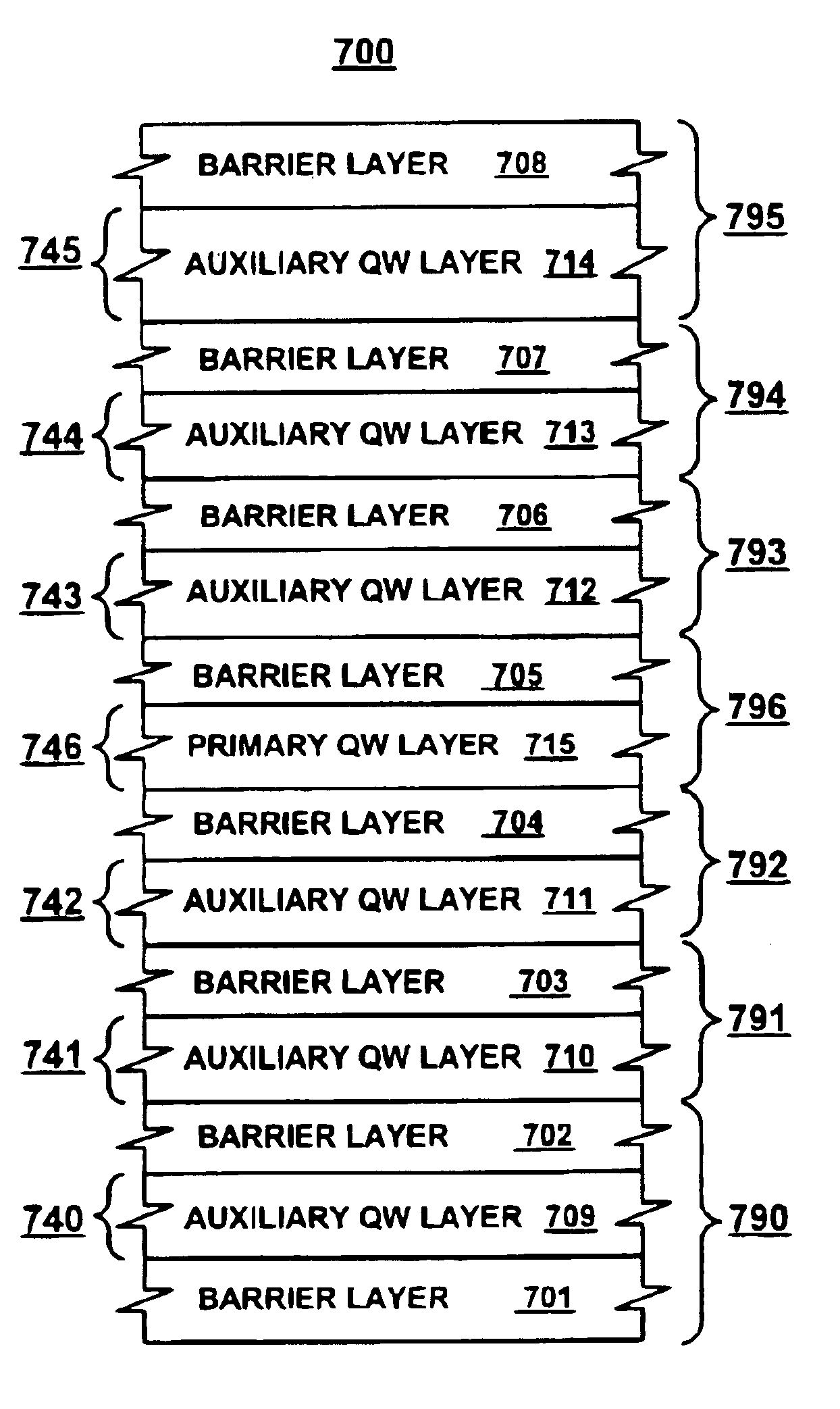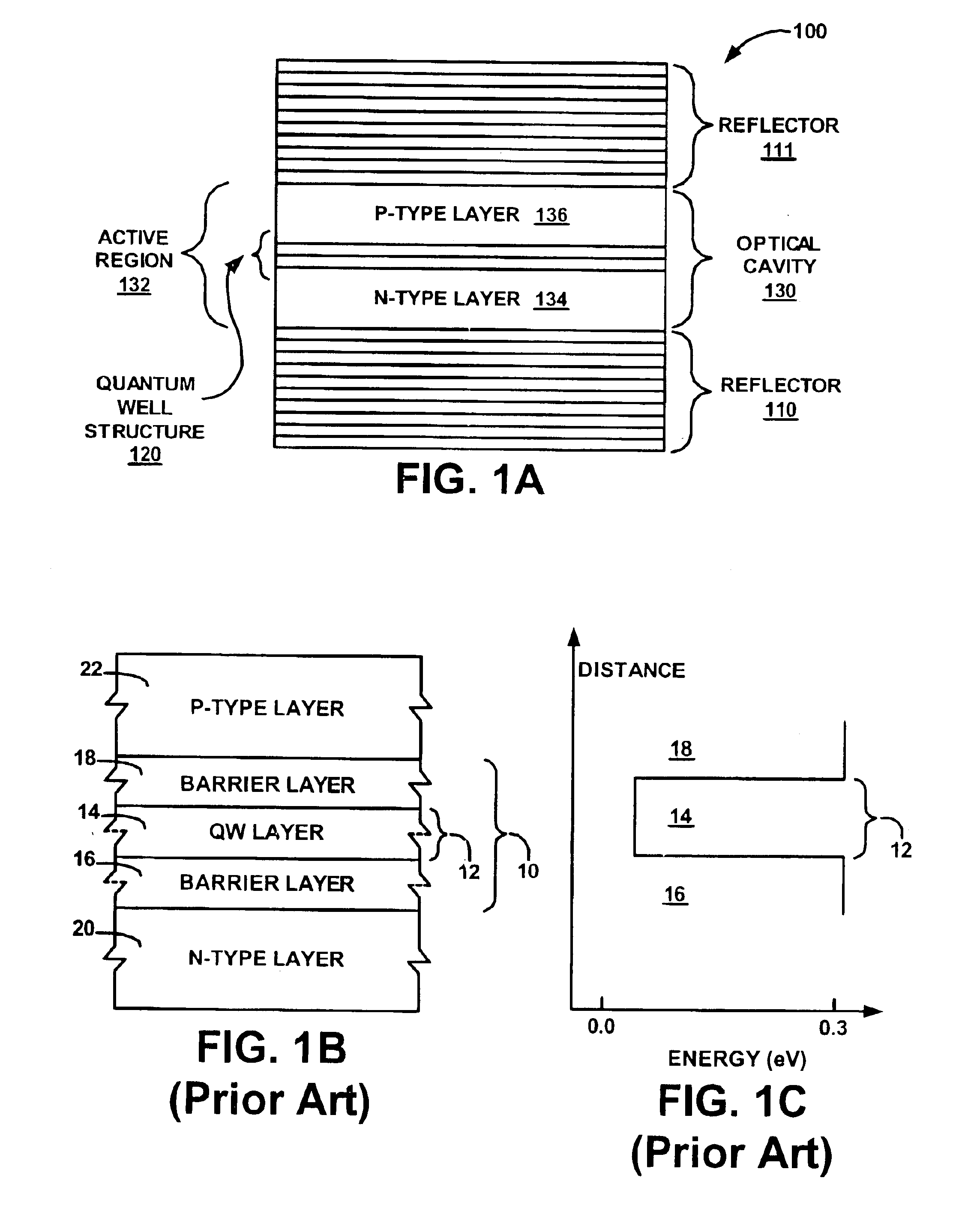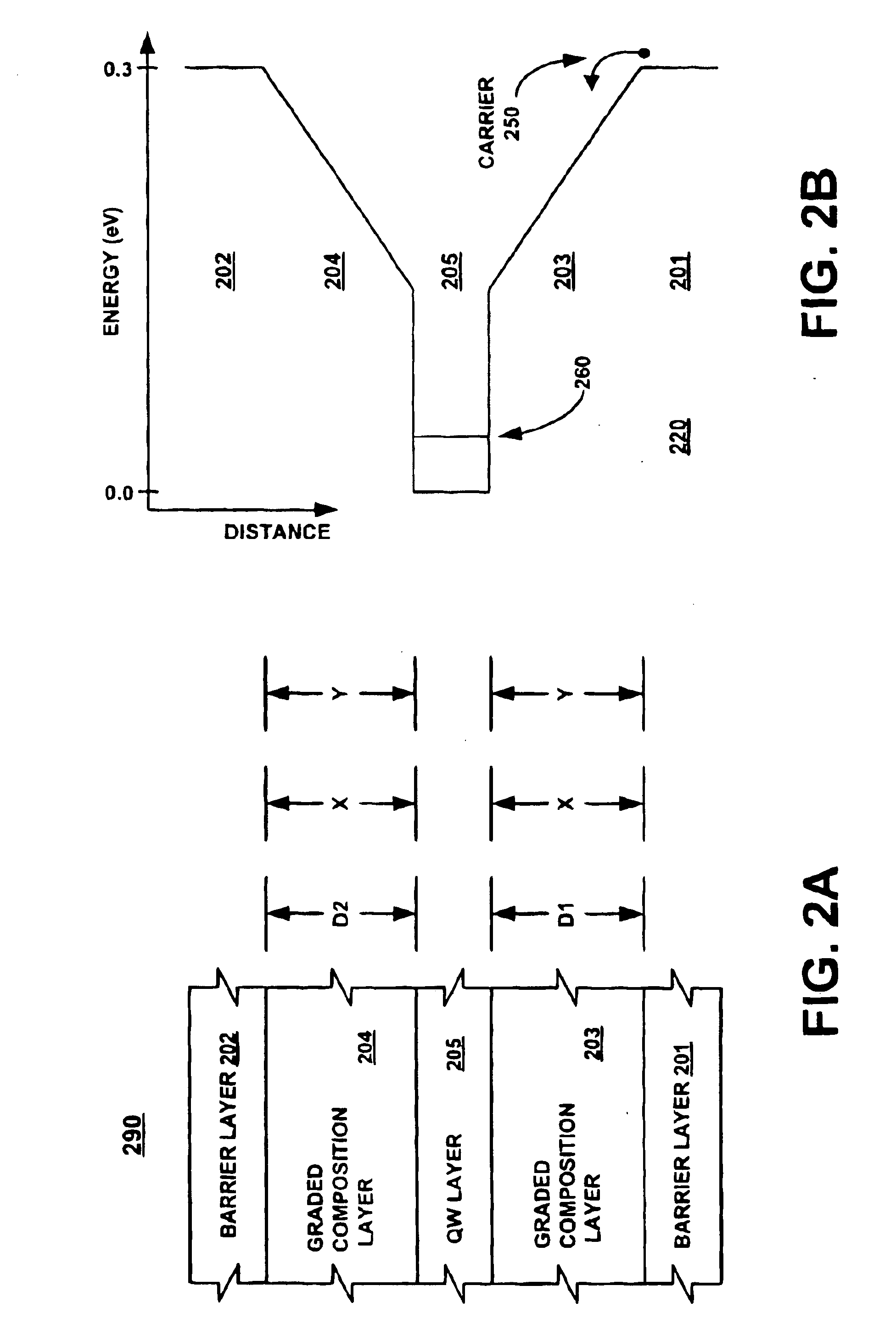Light-emitting device having element(s) for increasing the effective carrier capture cross-section of quantum wells
a light-emitting device and quantum well technology, applied in semiconductor devices, lasers, semiconductor lasers, etc., can solve the problems of differential quantum efficiency () and character temperature (tsub>0/sub>) that are lower than expected, and achieve the effect of increasing the effective carrier capture cross-section
- Summary
- Abstract
- Description
- Claims
- Application Information
AI Technical Summary
Benefits of technology
Problems solved by technology
Method used
Image
Examples
first embodiment
[0043]FIG. 2A is a cross-sectional view of a quantum well structure 290 of a light-emitting device according to the invention. FIG. 2B is a graph showing the conduction band profile 220 of the quantum well structure shown in FIG. 2A.
[0044]Turning first to FIG. 2A, quantum well structure 290 is composed of, in order, barrier layer 201, graded-composition layer 203, quantum well layer 205, graded-composition layer 204 and barrier layer 202. Quantum well layer 205 is a layer of a semiconductor material that has a relatively low bandgap energy. Barrier layers 201 and 202 are each a layer of a semiconductor material and have a higher bandgap energy than that of the quantum well layer 205.
[0045]Graded-composition layers 203 and 204 are each a layer of a semiconductor material whose composition is not uniform through the thickness of the layer. The graded-composition layers 203 and 204 have a thickness of D1 and D2, respectively. The thickness D1 and the thickness D2 can be substantially e...
second embodiment
[0056]The discussion now turns to FIG. 3A, which is a cross-sectional view of a quantum well structure 390 of a light-emitting device according to the invention. FIG. 3B is a graph showing the conduction band profile 320 of the quantum well structure shown in FIG. 3A.
[0057]Turning first to FIG. 3A, quantum well structure 390 is composed of, in order, barrier layer 301, intermediate composition layer 303, quantum well layer 305, intermediate composition layer 304 and barrier layer 302. Quantum well layer 305 is a layer of a semiconductor material that has a relatively low bandgap energy. Barrier layers 301 and 302 are each a layer of a semiconductor material and have a higher bandgap energy than that of the quantum well layer 305.
[0058]Intermediate composition layers 303 and 304 are each a layer of a semiconductor material whose composition remains relatively constant through the thickness of the layer. The material of the intermediate composition layers 303 and 304 has a bandgap ene...
third embodiment
[0067]Reference is now made to FIG. 4A, which is a cross-sectional view of a quantum well structure 400 of a light-emitting device according to the invention. FIG. 4B is a graph showing the conduction band profile 420 of the quantum well structure shown in FIG. 4A.
[0068]Referring first to FIG. 4A, quantum well structure 400 defines two quantum wells defined by quantum well structures 490 and 491. However, the present invention can be utilized with more or fewer than two quantum wells. Quantum well structure 490 is composed of, in order, barrier layer 401, quantum well layer 406, graded-composition layer 404, and barrier layer 402. Quantum well structure 491 is composed of, in order, barrier layer 402, quantum well layer 407, graded-composition layer 405, and barrier layer 403. Because quantum wells 490 and 491 are contiguous, they share the barrier layer 402. The graded-composition layers 404 and 405 have thicknesses D5 and D6, respectively. The thicknesses D5 and D6 can be substant...
PUM
 Login to View More
Login to View More Abstract
Description
Claims
Application Information
 Login to View More
Login to View More - R&D
- Intellectual Property
- Life Sciences
- Materials
- Tech Scout
- Unparalleled Data Quality
- Higher Quality Content
- 60% Fewer Hallucinations
Browse by: Latest US Patents, China's latest patents, Technical Efficacy Thesaurus, Application Domain, Technology Topic, Popular Technical Reports.
© 2025 PatSnap. All rights reserved.Legal|Privacy policy|Modern Slavery Act Transparency Statement|Sitemap|About US| Contact US: help@patsnap.com



